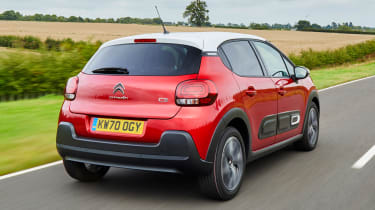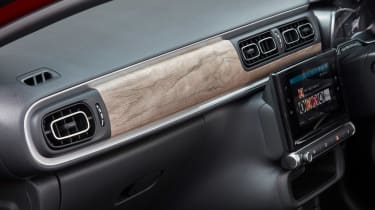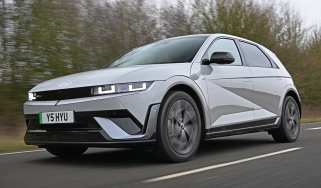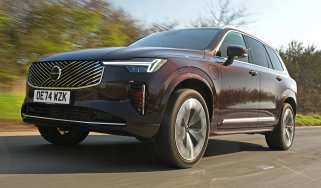Citroën C3 hatchback review (2017-2024)
“The Citroen C3 is now just as quirky as iconic models from the French firm’s past, boasting novel features that help it stand out”
Pros
- Distinctive style
- Loads of tech
- Comfy ride
Cons
- VW Polo feels classier
- Diesel engine doesn't justify extra cost
- Rivals are sharper to drive
Verdict - Is the Citroen C3 a good car?
With so many strong competitors, the previous iteration of the Citroen C3 supermini struggled to make much of an impression. This time around, though, a thorough redesign, punchier selection of engines and updated tech sought to address some of its weaknesses. Unfortunately, the Citroen C3 has been a victim of the success of its stable mate, the Citroen C3 Aircross compact SUV, which has somewhat overshadowed the standard supermini. It’s a shame as the C3 still has much more personality than its predecessor, and we think there are a few good reasons to include it on your new car shopping list.
Citroen C3 models, specs and alternatives
The C3 will suit you if you’re looking for a slightly more left-field choice that stands out in the competitive supermini crowd, especially since its mid-life facelift. You certainly won’t lose it in a car park full of Ford Fiesta and Vauxhall Corsa models, and it’s much more unique to look at than a SEAT Ibiza or Toyota Yaris. Citroen’s design language focuses on soft curves – there’s hardly a sharp angle anywhere to be seen. The ‘squircle’ shapes can be found everywhere from the tail lamp clusters to the dashboard air vents It’s competitively priced, too – an important factor in fighting off budget rivals such as the Hyundai i20, Kia Rio and Skoda Fabia. Another reason you might opt for the C3 over rivals is thanks to its greater focus on comfort, as opposed to the firm, ‘sporty’ ride many competitors aim for.
The Citroen C3’s looks are characterised by a high roofline, upright stance and high ground clearance, giving the supermini SUV-like styling. Its narrow grille sits high up and flows into the LED daytime running lights where you’d usually expect the headlights to be. The headlights sit just below these in a design reminiscent of the C4 Cactus. Depending on the trim level, some cars get a black ‘Airbump’ strip with plastic air bubbles on the side to protect the car from scrapes and stray trolleys in the car park, for example. The C3’s midlife refresh included a revised front end with a new grille and bonnet design, plus LED headlights became standard for all trims.
More conventional is the C3’s engine line-up. Buyers can choose from two petrols: the 1.2-litre petrol engines (known as PureTech) are available with either 82 or 109bhp – the former gets a five-speed manual gearbox only, while the latter comes with the choice between a manual or automatic six-speed. All C3s get up to over 50mpg regardless of the engine or transmission, but the six-speed manual 109bhp version uses the least fuel, with an official figure of 52mpg.
More reviews
Every version of the C3 will cost the standard VED (road tax) rate each year to tax, while company-car drivers should seek out the manual versions of the 82bhp and 109bhp 1.2-litre PureTech petrol engines, thanks to their lower emissions putting them into a cheaper Benefit-in-Kind (BiK).
The Citroen C3 range has been trimmed down from six trim levels to just three: You!, Plus and Max. We’d recommend springing for the Plus model as it gets a seven-inch touchscreen with DAB radio, Apple CarPlay, Android Auto and Bluetooth plus the protective ‘Airbump’ strips on the exterior and electric folding side mirrors. Top-of-the-line Max models get navigation and a three-year subscription to Citroen’s navigation service thrown in on top. You! models feel outdated in 2023, with a lower-spec basic five-inch black and white touchscreen and Bluetooth.
After Euro NCAP crash tests in 2017, the C3 was awarded four out of five stars for safety, with 88% for adult occupant protection. A large number of airbags, electronic stability control, tyre-pressure monitoring and lane-departure warning are fitted across the board. There’s also technology to sense if you’re getting tired and warn you to take a break, along with speed-limit warnings. ISOFIX points for securely attaching child seats are found in the front passenger and both outer rear seats. Auto emergency braking really should be fitted as standard, though.
Which Is Best?
Cheapest
- Name1.2 Turbo Plus 5dr
- Gearbox typeManual
- RRP£18,085
Most Economical
- Name1.2 Turbo Plus 5dr
- Gearbox typeManual
- RRP£18,085
Fastest
- Name1.2 Hybrid [110] Plus 5dr e-DCS6
- Gearbox typeSemi-auto
- RRP£19,885


















